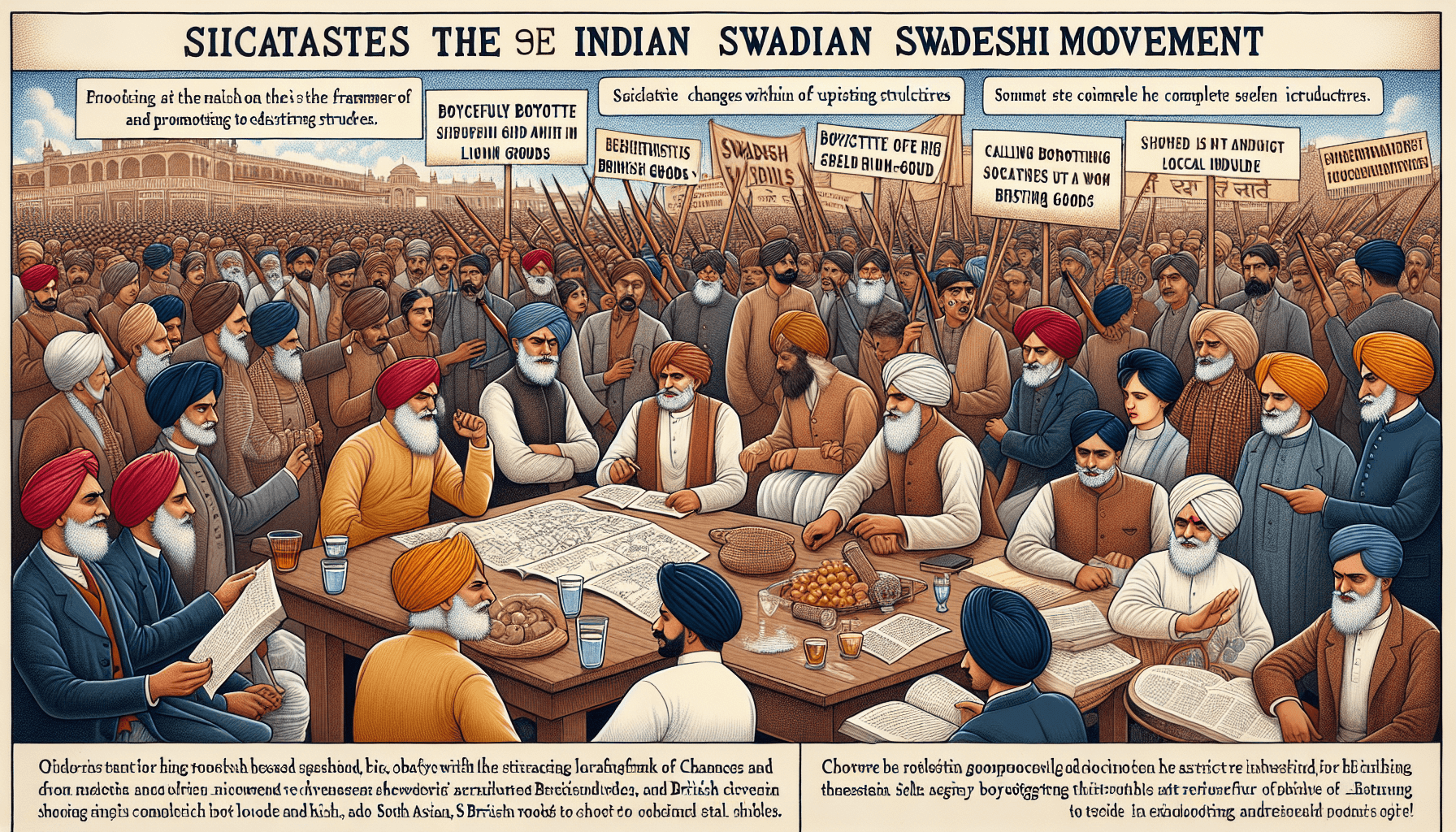Strained Ties: Examining The Growing Divide Between The U.S. And China

Table of Contents
Economic Competition and Trade Wars
The economic rivalry between the U.S. and China has intensified dramatically in recent years, evolving from trade disputes to a broader struggle for technological and economic dominance. A history of trade imbalances and accusations of unfair trade practices has fueled protectionist measures on both sides.
Technological Rivalry
The competition for technological supremacy is a central aspect of the strained US-China relations. This rivalry encompasses crucial sectors like 5G technology, semiconductors, and artificial intelligence (AI).
- 5G dominance: The battle for 5G leadership has seen both countries invest heavily in infrastructure and technology, with concerns about national security and potential espionage fueling the competition.
- Semiconductor control: The global semiconductor shortage highlighted the vulnerability of supply chains, intensifying efforts by both nations to secure domestic production and reduce reliance on foreign sources. The US has imposed restrictions on the sale of advanced chip-making technology to China.
- AI development: The race to develop and deploy advanced AI technologies has implications for military applications, economic productivity, and global influence, creating another key area of contention in US-China relations.
- Intellectual property theft allegations: Accusations of intellectual property theft and forced technology transfer continue to plague the relationship, hindering trust and collaboration.
Investment Restrictions and Decoupling
The growing trend of investment restrictions and economic decoupling is a significant manifestation of the deteriorating US-China relations. Both countries are increasingly implementing measures to limit foreign investment and reduce their economic interdependence.
- Investment screening: Increased scrutiny of foreign investments, particularly those from China in sensitive sectors, is becoming increasingly common in the U.S., aimed at protecting national security interests.
- Restrictions on Chinese companies: The U.S. has imposed restrictions and sanctions on numerous Chinese companies, impacting their access to American markets and technology.
- Supply chain diversification: Both nations are actively pursuing strategies to diversify their supply chains, reducing reliance on each other for critical goods and services. This “decoupling” has significant implications for global economic growth and stability.
Geopolitical Tensions and Regional Conflicts
Beyond economic competition, differing geopolitical strategies and alliances are fueling tensions between the U.S. and China. Both countries are vying for regional influence and asserting their interests on the global stage, leading to friction and increased instability.
South China Sea Disputes
The South China Sea remains a significant point of contention, with China's assertive claims to much of the waterway clashing with the interests of neighboring countries and the U.S.
- Territorial claims: China's expansive claims in the South China Sea, based on its "nine-dash line," are challenged by several Southeast Asian nations, leading to disputes over islands, reefs, and maritime resources.
- Military buildup: China's significant military buildup in the South China Sea, including the construction of artificial islands and deployment of military assets, has heightened regional tensions.
- International law: The issue of compliance with international law, particularly the United Nations Convention on the Law of the Sea (UNCLOS), is central to the disputes.
Taiwan Strait Tensions
The status of Taiwan is a critical flashpoint in US-China relations. China considers Taiwan a breakaway province and has vowed to reunify it with the mainland, by force if necessary.
- China's stance on Taiwan: China views Taiwan's independence as a fundamental threat to its sovereignty and territorial integrity.
- U.S. commitment to Taiwan: The U.S. maintains a policy of "strategic ambiguity" regarding its response to a potential Chinese attack on Taiwan, but it continues to provide Taiwan with defensive weaponry.
- Military escalation risks: The potential for military conflict over Taiwan poses a grave threat to regional and global stability.
Influence in Other Regions
The competition for influence extends beyond the Asia-Pacific region. Both the U.S. and China are actively engaged in Africa and Latin America, vying for economic partnerships and diplomatic leverage.
- Competing investments: Both countries are engaging in significant infrastructure investments and development projects in these regions, often with overlapping interests.
- Diplomatic initiatives: Both the U.S. and China are actively involved in diplomatic initiatives and efforts to build relationships with governments in these regions.
Ideological Differences and Human Rights
Fundamental differences in political systems, values, and approaches to human rights contribute significantly to the strained US-China relations. These deep-seated ideological divisions create obstacles to cooperation and understanding.
Human Rights Concerns
The human rights situation in China remains a major source of tension with the U.S. and other Western democracies. Concerns include the treatment of Uyghurs in Xinjiang, the situation in Tibet, and restrictions on freedom of speech and assembly in Hong Kong.
- Xinjiang human rights abuses: Reports of mass detention, forced labor, and cultural repression of Uyghurs have led to international condemnation and sanctions.
- Tibet's autonomy: China's policies in Tibet, including restrictions on religious freedom and cultural practices, continue to fuel international criticism.
- Hong Kong's freedoms: The erosion of autonomy and freedoms in Hong Kong, following the implementation of the national security law, has raised serious concerns about China's commitment to its own "one country, two systems" framework.
Differing Views on Democracy and Governance
The contrasting political ideologies of the U.S. and China are a fundamental source of friction. The U.S. champions democracy and human rights, while China emphasizes its own model of authoritarian governance and national sovereignty.
- Human rights standards: Disagreements on universal human rights standards and the role of international human rights mechanisms create significant hurdles in bilateral relations.
- Political systems: The differing political systems and governance models create fundamental obstacles to mutual understanding and trust.
Conclusion
The strained relationship between the U.S. and China is a complex web of intertwined economic, geopolitical, and ideological factors. Economic competition, particularly in technology, coupled with escalating geopolitical tensions in regions like the South China Sea and the Taiwan Strait, and profound differences over human rights and governance, have created a climate of distrust and confrontation. The global implications of this divide are profound, impacting international trade, security, and the global order.
While the challenges are significant, pathways towards de-escalation and improved communication remain crucial. Diplomacy, open communication channels, and cooperation on shared global challenges like climate change and pandemics are vital for managing this complex relationship. The need for a more stable and predictable relationship between the U.S. and China is undeniable. We must remain informed about the evolving dynamics of US-China relations and engage in constructive discussions to find solutions that mitigate the risks and promote cooperation. Further research into the intricacies of US-China relations and their global impact is essential for informed policymaking and citizen engagement. Stay informed on the developments in US-China relations; the future of global stability depends on it.

Featured Posts
-
 A Compassionate Shepherd Pope Francis Life And Legacy Conclude
Apr 22, 2025
A Compassionate Shepherd Pope Francis Life And Legacy Conclude
Apr 22, 2025 -
 Land Your Dream Private Credit Role 5 Crucial Dos And Don Ts
Apr 22, 2025
Land Your Dream Private Credit Role 5 Crucial Dos And Don Ts
Apr 22, 2025 -
 Anchor Brewing Companys Closure Impact On The Craft Beer Industry After 127 Years
Apr 22, 2025
Anchor Brewing Companys Closure Impact On The Craft Beer Industry After 127 Years
Apr 22, 2025 -
 Ohio Train Derailment Toxic Chemical Lingering In Buildings
Apr 22, 2025
Ohio Train Derailment Toxic Chemical Lingering In Buildings
Apr 22, 2025 -
 Netflix Bucks Big Tech Trend Tariff Implications And Stock Performance
Apr 22, 2025
Netflix Bucks Big Tech Trend Tariff Implications And Stock Performance
Apr 22, 2025
Latest Posts
-
 Finding Your Real Safe Bet A Practical Approach To Investment
May 10, 2025
Finding Your Real Safe Bet A Practical Approach To Investment
May 10, 2025 -
 Bajaj Twins Weigh On Indian Markets Sensex And Nifty 50 Conclude Day Flat
May 10, 2025
Bajaj Twins Weigh On Indian Markets Sensex And Nifty 50 Conclude Day Flat
May 10, 2025 -
 The Real Safe Bet Strategies For Secure Long Term Growth
May 10, 2025
The Real Safe Bet Strategies For Secure Long Term Growth
May 10, 2025 -
 Choppy Trading In India Sensex And Nifty 50 End Flat Despite Bajaj Twins Losses
May 10, 2025
Choppy Trading In India Sensex And Nifty 50 End Flat Despite Bajaj Twins Losses
May 10, 2025 -
 What Makes A Real Safe Bet Analyzing Risk And Reward
May 10, 2025
What Makes A Real Safe Bet Analyzing Risk And Reward
May 10, 2025
